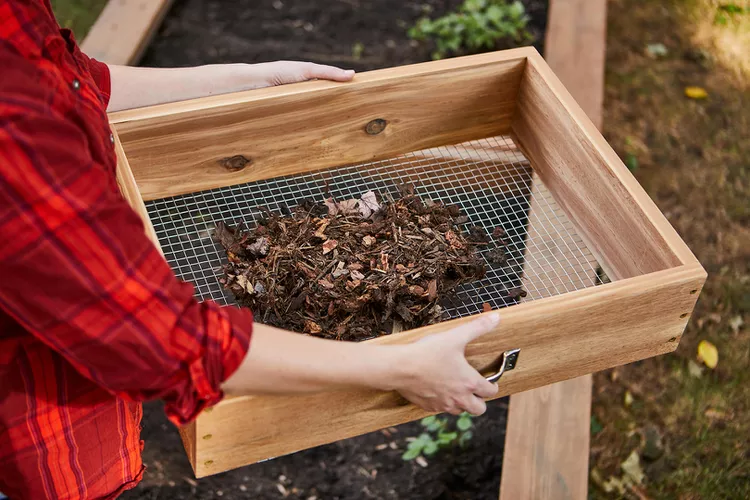- Working Time: 30 minutes
- Total Time: 30 minutes
- Skill Level: Beginner
Sifting soil and compost is one aspect of gardening that can sometimes be challenging—but always pays off. This small sifter box makes it easy to shake out and keep the good stuff and return the leftovers to your compost pile. And it's the perfect size for one person to handle by themselves in a modest garden.
There are plenty of benefits to composting, such as enriching the soil we use for gardening. You also can reduce up to 30 percent of the things you normally throw in the trash by composting food scraps and yard waste instead. When composting at home, it’s important to sift your compost to separate the organic material that’s suitable for gardening and the stuff that still needs some time to decompose. The good stuff, called humus, is dark, fluffy, and rich in nitrogen and other things that plants thrive on. Depending on what organic materials you add to your compost pile, how much, and climate factors like heat and humidity, it can take up to a year for humus to develop. The good news is, once you’ve started the cycle and continue adding materials to your compost, you’ll be reaping that sweet, sweet humus for years to come.
What You'll Need
Equipment / Tools
- Tape measure
- Chop saw
- Power drill
- Countersink bit
- Carpenter's square
- Sandpaper
- Tin snips
Materials
- 1-inch x 6-inch x 8-foot cedar board
- 1/2-inch square wire fencing, sometimes called hardware cloth, 24 x 18 inches
- 2-1/2-inch deck screws
- 1-1/4-inch exterior cabinet screws
- 1/8-inch fender washers
- 2 handles
Instructions
-
Make Cuts
Cut your wood to the below dimensions.
-
Build the Frame
On a work surface, line up the long boards (the frame length) parallel to each other, then square up the short boards (the frame width) perpendicular in between them to form the frame. Predrill the screw holes, then drill three 2-1/2-inch deck screws from the outside of the long boards into the ends of the shorter boards to fasten, making sure all corners are square. Sand down any rough edges.
-
Attach the Fencing
Line up the fencing along the edge of the sifter frame. Predrilling all screw holes, drill a screw through a washer and the fencing to attach the fencing to one corner of the frame. Repeat with remaining 3 corners, making sure to keep the fencing taught. Then drill a screw and washer in every 4 to 6 inches along the edges of the frame to secure the fencing. Use tin snips to trim any excess fencing.
-
Attach the Handles
Use cabinet screws to attach the handles to the sifter in the middle of each of the long sides.
Editor's Tip: To make your sifter stronger and keep your gloves from catching on any excess wire fencing, nail thin strips of wood over the edges of the fencing.




















